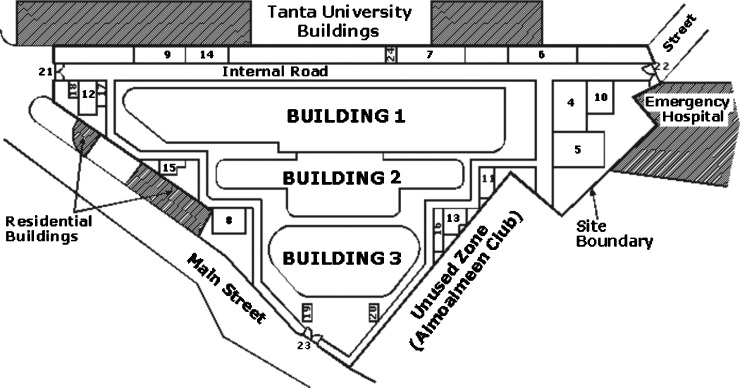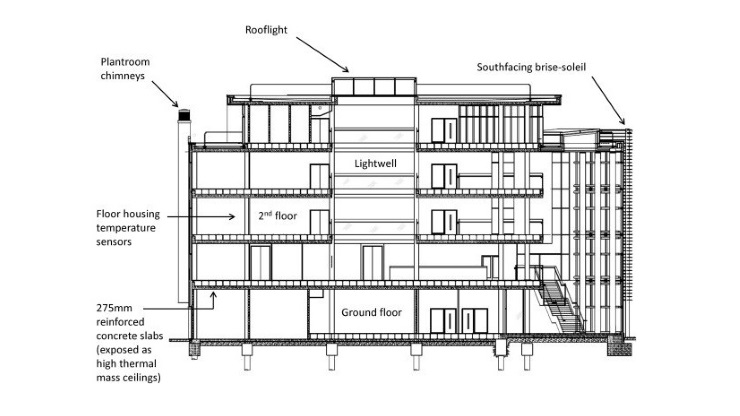Features
Construction Drawings
Building drawing types and their purposes.

Drawings of buildings, also known as construction drawings or architectural drawings, are visual illustrations that depict a proposed public, residential, or commercial building.
They guide the construction process by showing a building’s dimensions, how various materials will be used as well as other aspects that also help local authorities to grant necessary approvals.
Construction drawings are often drawn by architects, although other building professionals contribute one or several drawing types. For instance, on a shopping mall project, engineers may draw their drawings for plumbing or ventilation.
Drawings of buildings have architectural symbols for various facets of the construction project. These symbols include standardized markings that represent lighting and electrical structures among other features.
Architectural symbols make it easier for construction teams and local building authorities to read and understand construction drawings.
Here are the common types of architectural drawings:
Building drawing types
There are five main types of construction drawings, including architectural, electrical, plumbing, and finishing drawings – each serving a specific purpose.
1. Architectural drawing
This drawing, which has the particulars of the project, is labelled as the mother drawing of all the drawings used in the construction field.
Common types of architectural drawings include site plans, working plans, section drawings, elevation drawings, and detail drawings.
(i.) Site plan:
A site plan can be described as a drawing on a large scale, showing the wholly included area for a project site. This is often the primary drawing used for marking out the design on site.
This could quite easily be a building drawing that is finally agreed upon after several office meetings and visits to construction sites.
(ii.) Working plan: This type of drawing provides the details of horizontal measurements of the building, thickness of walls, empty spaces within the building, as well as the locations of columns.
A working drawing also illustrates the openings of a building including doors, windows, and ventilators. Traditional work plans contain two-dimensional orthographic projections of a structure such as sections and elevations.
(iii.) Section drawing: These are perspective drawings of buildings. The other way of defining them is that these are the pictures of a building cut through an imaginary vertical plane.
Perspective drawings of buildings give a view through the spaces and surrounding components of a building – which may not be obvious on working drawings.
Section plan drawings are often used to show the foundation of a building, the inside of walls or floors, beams, columns, lintels (support structures above doors and windows), etc.

(iv.) Elevation drawing: This is a first-angle projection that indicates all the parts of the structure as viewed from a specific direction with the perspective flattened.
These drawing types are usually made for four directional views, for instance, north, south, east, and west. They provide details of openings, dimensions, and form of the external surface, the height of the building, and the last finish of the building.
(v.) Detail drawing: This building drawing illustrates elements shown in other drawings of buildings on a bigger scale. They give information about the position and relation of different parts to the respective others.
Detail drawings can be created for staircases, door frames, window frames, cornices, or material connections – e.g., where a column meets the foundation.
2. Structural drawing
This is a type of building drawing with all data on how a structure will be assembled. Structural drawings, which are the backbone drawings of buildings, are prepared by engineers based on details provided by architectural drawings.
Editor’s Note: Structural drawings should not be confused with architectural drawings. While structural drawings are easily identified from their mostly line work drawings, architectural drawings contain features such as bathroom and kitchen fixtures.
(i.) General notes: This is not a drawing but a text document that provides details of all the structural drawings mentioned hereinafter in this section, such as concrete mix, lapping interval, curing period, abbreviation, codes, and other important construction processes.
(ii.) Excavation drawing: These drawings outline the excavation dimensions, column positions, footing plan, and column grid lines, with the excavation line marked in a dotted style for clarity.

(iii.) Column layout: This drawing shows the positions and orientations of columns and their reinforcement for the building, essential for accurately locating the structure.
(iv.) Plinth beam layout: It shows the sizes, positions, and sections of the plinth beam and the details of reinforcement in a plinth beam, which is a reinforced concrete beam built between the wall and its foundation.
(v.) Lintel beam layout: This indicates the sizes, position, and sections of the lintel beam and the details of reinforcement in the lintel beam (a beam that is built over a door or a window to support the weight above).
(vi.) Roof beam and shuttering layout: It shows the details of roof beam reinforcement, its section, and shuttering details.
(vii.) Roof slab layout: This drawing provides details of the reinforcement of a roof slab, its section, and openings in the roof for stairs or skylights.
RELATED: How to Read Construction Drawings
3. Mechanical and Electrical drawing
Also known as a wiring diagram, an electrical drawing provides a visual representation and information about electrical fixtures, the location of switches, fans, lights, and other details on an electrical system or circuit.
These types of construction drawings are used to deliver the engineering design to the technicians hired to install the electrical system (wiring) for the building.
In small residential projects, the two drawings are combined into one, but professionals may choose to separate the two in large commercial projects such as hospitals that often require complex ventilation systems.
4. Plumbing and drainage drawing
Plumbing and drainage drawing denotes the system of piping for water or gas supply into the building and the wastewater coming out of the house.
These types of construction drawings show the exact locations and sizes of plumbing fixtures such as pipes, pumps, water tanks, drains, and vents.
5. Finishing drawing
These types of drawings are indicative of the finishing for every part of the building, including plastering texture, paint colors, and flooring design. Much of this information can be included in elevation drawings.
Unlike detail drawings, which focus on the structural elements of a building, a finishing drawing focuses on the design elements such as wall paint colours, floor patterns, plaster texture, etc.
Other types of drawings include:
Reflected ceiling drawing
This drawing depicts what the ceiling should look like when viewed from the floor. It might show elements such as the light fixtures attached to ceilings, the visual features of a cornice, and the design of a visible column.
Perspective drawings
These drawings illustrate a proposed building in three dimensions. They offer a more detailed understanding of how the structure will look once finished.
A perspective drawing might help builders visualize, for example, how porches fitted to the outsides of apartment units will look once erected.














